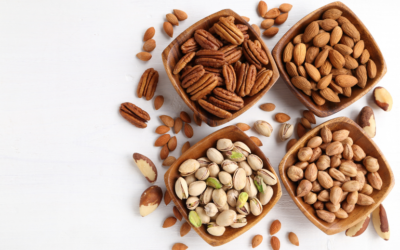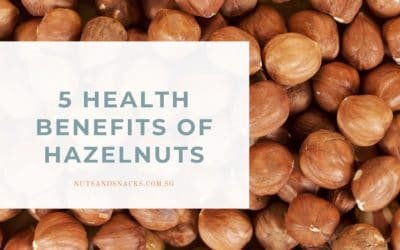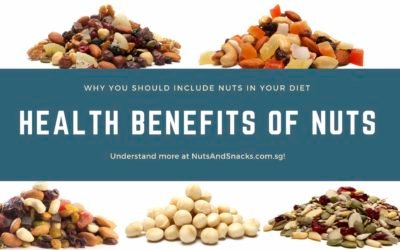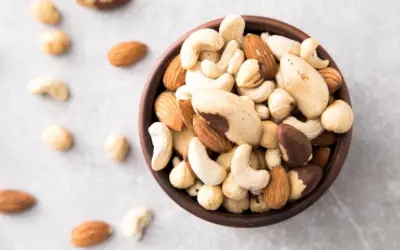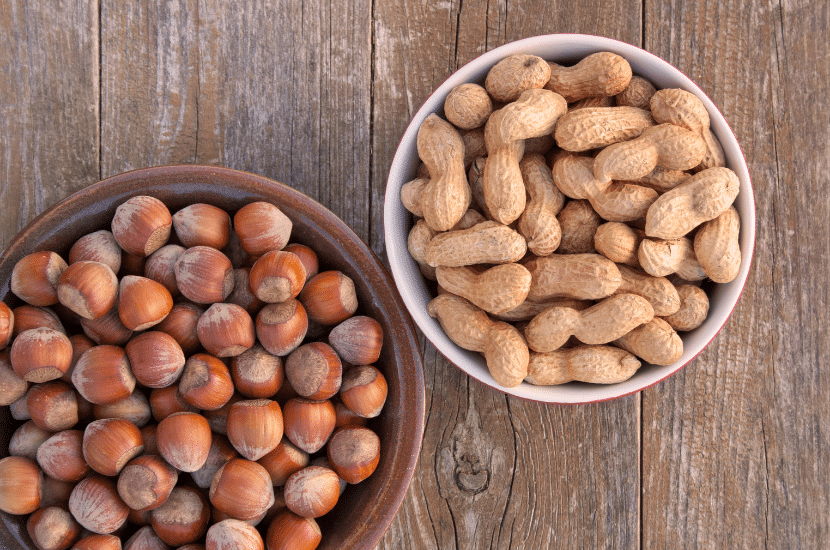
What’s The Difference Between Nuts, Legumes, And Drupes?
Some may know that peanuts are not actually nuts, but they are legumes. Do you know however, that cashews, almonds, and walnuts are not true nuts as well? This article takes you on the different classifications, such as drupes, legumes, and nuts.
Drupes
A drupe is a fruit whereby the outer fleshy component surrounds a shell, with a seed (also known as a pit) inside. You can imagine how the cross sectional of drupes will look like, with some examples such as peaches, cherries, plums and olives which are all drupes. Hence with these fruits, people usually eat the outer pulpy flesh and discard the seed. Interestingly, many tree nuts such as almonds, walnuts and pecans are also drupes, or are called drupaceous nuts. For these “nuts”, we consume the seed instead.
The outer skin layer is called exocarp, which has three layers. For peaches, the exocarp would be the furry pink skin, while for coconuts, the exocarp would be the thick brown shells. Hawthorn fruits are also drupes, and these fruits are a food source for migratory birds that travel from Europe to UK. Their seeds are also “eaten” or more specifically, swallowed by small mammals and then passed out in their droppings.
Nuts
A true nut is a pod with hard shells, containing a single seed inside. Unlike drupes, they do not have as many seeds, and they do not open on their own. They form when the walls of the ovaries of the fertilized flowers swells and hardens. Some examples of true nuts are hazelnuts, chestnuts, and acorns.
Seeds
All cereal grains, legumes and tree nuts are seeds, but not all seeds are nuts. For instance, cereal grains are not nuts because they are not encased in a hard shell.
Legumes
A legume is a pod with some seeds inside, and it will split open on its own when it thinks it is ready to harvest. Peanuts are legumes, as they grow underground instead of tree nuts, and hence are legumes, similar to peas, lentils and beans. Legumes are one of the best plant-based sources of protein. Legumes also contain healthy fibers like resistant starch and soluble fibers. These fibers enable the healthy bacteria in your gut to thrive, and they form fatty acids such as butyrate which improves colon health and reduces the risk of developing colon cancer. Both fibers enable you to feel full and hence it is a common staple food in many cultures. The fibers also help to control blood sugar levels and may help to improve insulin sensitivity.
Edamame soybeans are legumes which are popularly eaten as a healthy snack. These green soybeans are one of the best plant-based sources of proteins. Unlike most plant-based proteins, edamame contains all the essential amino acids the body requires, although they are not as high quality as animal derived protein.
Consuming soybeans may also have a cholesterol lowering effect, as a study published in PubMed suggested that eating 47 grams of soybeans everyday helps to lower total cholesterol levels by 9.3% and “bad” cholesterol levels by 12.9%. Hence, consuming soybeans may help to reduce the risk of developing heart illness. Edamame soybeans also contains high amounts of minerals such as folate, vitamin K and manganese, which proves them to be a nutrient-dense and healthy snack. Get some edamame soybeans today!
Black beans are also one of the healthiest legumes, as they are beneficial for bone health. The calcium and phosphorous content help in bone structure, while iron and zinc are important for bone strength and elasticity. Black beans are low in sodium, and the minerals such as calcium and magnesium help to lower blood pressure. Black beans also contain quercetin that has anti-inflammatory effects and helps to protect against damage caused by “bad” cholesterol, hence protecting heart health. The fiber, potassium, folate, vitamin B6 content, together with the absence of cholesterol all helps to promote heart health. Hence, black beans are one of the healthiest and you should snack on them, dry and roasted, which makes them more delicious.
Tree nut allergy
Tree nuts are any nut that is grown on a tree – it can include drupes. You may have a tree nut allergy of not being able to consume walnuts, but that does not mean you are allergic to coconuts, or every other tree nut. Hence, this means that you have to watch the labelling for that particular nut that you are allergic to. However, if the product cautions against a general “tree nut”, and you are unsure of which nut it is, then it is best to avoid the product.
Conclusion
It can be confusing to differentiate between a drupe and a nut, but you do not necessarily need to, as these nuts all contain the same nutritional profile. They contain heart healthy fats, proteins, and minerals. They also have cholesterol lowering and anti-inflammatory effects, which boosts heart health, amongst many other benefits. Get your nuts and beans today!



